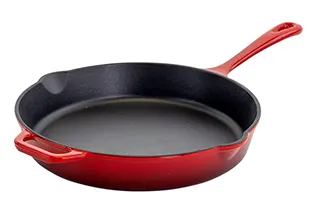
how to choose a good cast iron skillet
How to Choose a Good Cast Iron Skillet
When it comes to cooking, a cast iron skillet is a prized possession for chefs and home cooks alike. Known for their durability and heat retention, these skillets can elevate your culinary experience. However, choosing the right cast iron skillet is not a straightforward task. Here are some essential factors to consider when selecting a high-quality cast iron skillet.
Cast iron skillets are made of molten iron that is poured into molds. The thickness of the skillet affects its heat retention and cooking performance. Look for a skillet that is at least ¼ inch thick, as this thickness allows for even heat distribution and reduces the risk of warping. Additionally, consider whether you want a traditional bare cast iron or an enameled option. Enameled skillets offer a non-reactive surface and are easier to clean but may not provide the same seasoning benefits as traditional cast iron.
2. Size
Cast iron skillets come in various sizes, typically ranging from 6 inches to 15 inches in diameter. The size you choose should depend on your cooking needs. A smaller skillet is perfect for frying a couple of eggs or sautéing vegetables, while a larger skillet is ideal for baking, frying, or cooking larger meals. Think about the types of dishes you usually prepare and select a size that fits your cooking style.
3. Weight
how to choose a good cast iron skillet

Cast iron skillets are heavier than many other types of cookware. While weight contributes to the skillet's heat retention, it can affect maneuverability. If you plan to use the skillet frequently, consider how comfortable it feels when lifted. A heavy skillet provides excellent heat retention but could be cumbersome when flipping pancakes or serving food.
4. Handle Design
The handle of the skillet is another important feature to consider. Look for a skillet with a sturdy, comfortable handle that offers a good grip. Some skillets come with an additional helper handle on the opposite side, making it easier to lift heavy meals. Make sure the handle is long enough to provide leverage but not so long that it becomes unwieldy.
5. Seasoning and Maintenance
Most cast iron skillets require seasoning to create a non-stick surface and improve their durability. When purchasing, check if the skillet comes pre-seasoned. Pre-seasoned skillets save you the initial effort of seasoning it yourself. Additionally, consider the maintenance required; enameled skillets offer ease of cleaning, while traditional skillets need regular seasoning and care to keep them in optimal condition.
Conclusion
Choosing a good cast iron skillet involves considering various factors such as material, size, weight, handle design, and maintenance needs. By keeping these aspects in mind, you can select a skillet that best suits your cooking style and enhances your culinary adventures. With the right cast iron skillet in your kitchen arsenal, you can enjoy delicious meals and create treasured memories for years to come.
-
Season Cast Iron Perfectly with GPT-4 Turbo TipsNewsAug.01,2025
-
High Quality Cast Iron Cookware - Baixiang County Zhongda MachineryNewsAug.01,2025
-
Premium Cast Iron Pan: Durable & Perfect HeatNewsAug.01,2025
-
High Quality Kitchen Durable Black Round Cast Iron Cookware Pancake Crepe Pan-Baixiang County Zhongda Machinery Manufacturing Co., Ltd.NewsAug.01,2025
-
Cast Iron Cookware - Baixiang County Zhongda Machinery | Nonstick, Heat ResistanceNewsAug.01,2025
-
High Quality Kitchen Durable Black Round Cast Iron Cookware - Baixiang County Zhongda Machinery | Non-Stick, Heat Retention, DurableNewsJul.31,2025


